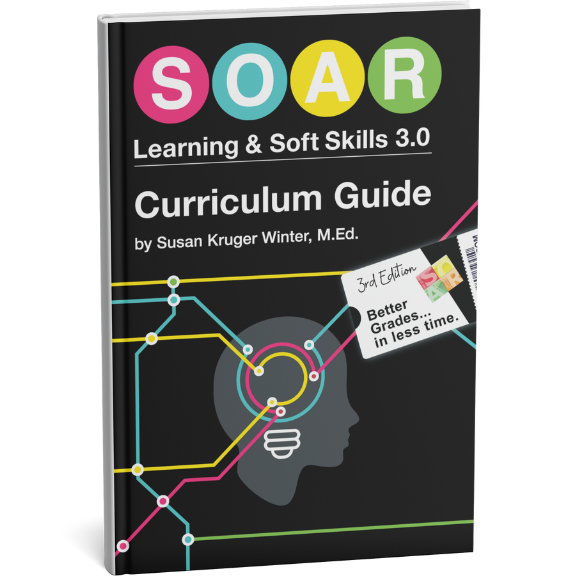Stress-Free Test-Taking Tips!
The following test-taking tips will help you relax, feel “in control,” think more clearly, and ultimately… raise your test grades.
Its test day! For many students that means: clammy hands, sweating, the non-stop bouncing leg, brain-fog, “I knew this stuff last night, why can’t I remember it now!” and even full-on P-A-N-I-C!
Preparing for a test is essential. But, there are some things you can do while taking a test to reduce anxiety and improve your score.
 Test-Taking Tips
Test-Taking Tips
The following test-taking tips will help you relax, feel “in control,” think more clearly, and ultimately… raise your grades:
- Be good to yourself. You’ve heard it before, but good rest, a balanced breakfast, and drinking water keep your brain healthy. This will help you think more clearly when taking a test.
- Know your time limit. Before the test date, ask your teacher what type of problems will be on the exam, how many, and how much time you will have to take it. Then, determine how much time you should spend on each problem/section of the test so you can properly pace yourself.
- Read the directions. Twice. Any teacher who has ever graded a test will verify that MANY points are lost by students who neglect to read (and follow) directions.
- Scan the entire test once. Before answering any questions, quickly read through the problems. Just as athletes warm-up before a game, scanning a test gives your brain a chance to warm-up to the information it will need to access. This will dramatically improve your performance.
- Begin answering questions.
- Stuck? Skip it. When you are stuck, you can waste a lot of valuable time fretting over ONE question. As you fret, you lose time, get nervous and lose confidence. Before you know it, you are rushing through the last 30 problems because you were stuck on problem #5. Instead, skip that problem, moved on to the next one, and come back to #5 after you have completed the remaining questions. You will be more relaxed as you complete the rest of the test and may even discover the answer to #5 while reading question #29. Plus, sometimes your memory will “remember” the answer to that problem while working on another problem in the test.
- Breathe. If you begin to feel anxious because you came across five questions in a row that could not answer, take slow and deep breaths. Deep breathing controls your reaction to anxiety and keeps your brain in “rational mode.” You will need rational mode to make good guesses on those problems!
- When in doubt, go with you first “hunch.” For most tests, you are not penalized for guessing. So, after you have completed the rest of the test and still do not have a clue about the correct answer to a question, choose the option that you *first* thought was correct. Your unconscious mind may be trying to tell you something.
- Do not turn your test in early! Every point earned on a test puts you one point closer to a better grade. Take advantage of extra time to make sure you read each question correctly, filled in the correct bubbles on the Scantron sheet, followed the directions properly, etc. You will find an error about 50% of the time.
Test-Taking Tips for Different Types of Tests
Multiple Choice: Read all of the options first, then cross out the obvious wrong answers to narrow down your choices.
Essay: If possible, do essay questions last to give your brain more exposure to the information before creating your own answers. Before you write long paragraphs, create a short outline in the margin using key words to help you write a more focused answer. If you run out of time, your teacher may give you partial credit based on your outline.
True/False: These are probably the most misleading and misused test questions, so approach them with caution. Take your time to read each statement twice and look for trick words (like “not”) that can change the entire meaning of the statement. Have the mind set of “what is ‘wrong’ with this statement”, thus making it false. If you can’t find anything wrong with the statement, then it must be true.
Fill-in-the-Blank: First, fill in only the blanks you know 100% and cross out used words in the word bank, then complete the rest of the problems. Determine if the blank requires a noun, verb, adjective/adverb response. This can give you significant clues about which word to use. Reread all answers to ensure the filled-in words make sense in each statement and that all grammar tenses, singular and plural nouns, etc. fit the rest of the sentence.
There is no substitution for a good study plan before a test, but these test-taking tips will help you be more strategic while taking tests.
To find more easy-to-implement test-taking tips…
Educators, click here.
Parents, click here.
Good luck!
Susan Kruger, M.Ed.
Six Steps
Conquer the Chaos
Get Our Free Guide & Information on...

"*" indicates required fields
Get Our FREE Curriculum Guide!
The SOAR® Curriculum
The most critical learning, organizing, and communication skills needed for school. Learn more here.
Who’s Using SOAR®?
SOAR® Guarantee
Click here to learn more.

 Test-Taking Tips
Test-Taking Tips



